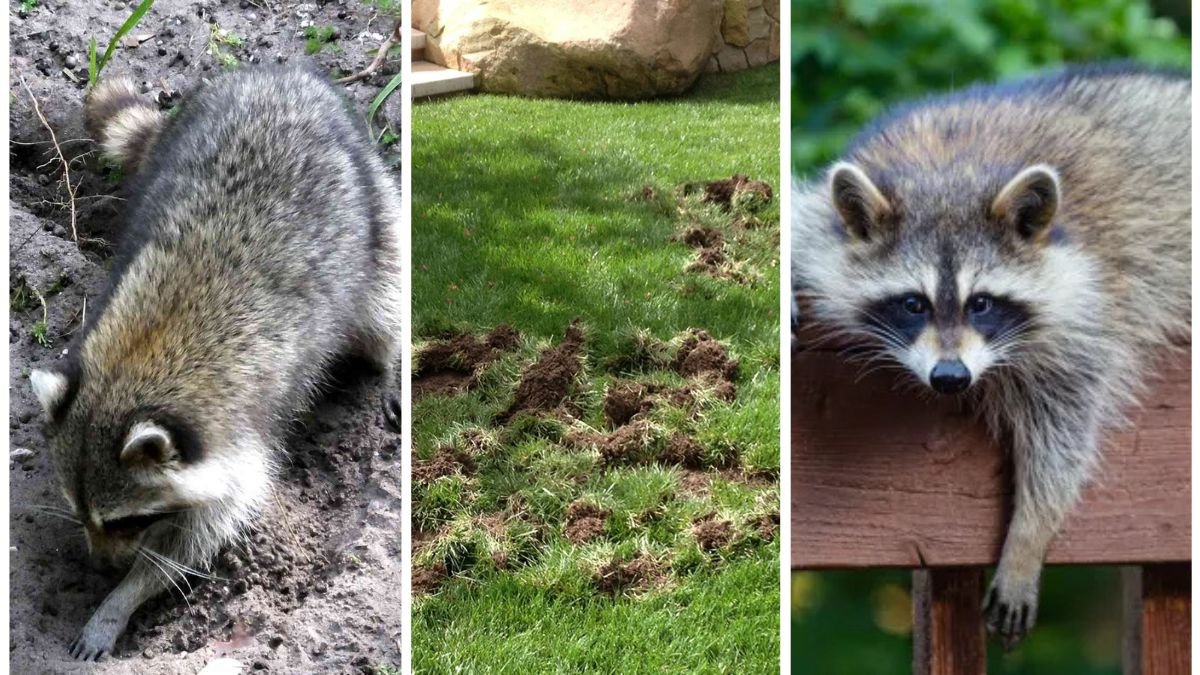Raccoons are clever, nocturnal animals that often create havoc in residential yards. While they may appear cute, raccoons can dig up lawns in search of grubs, insects, and other food sources, leaving unsightly holes, damaging turf, and potentially spreading disease. Managing raccoons without harming them requires a combination of understanding their behavior, modifying the environment, and using humane deterrents.
This article explores strategies to prevent raccoons from digging in your lawn, offering practical and safe solutions that maintain both yard aesthetics and wildlife safety.
Understanding Raccoon Behavior
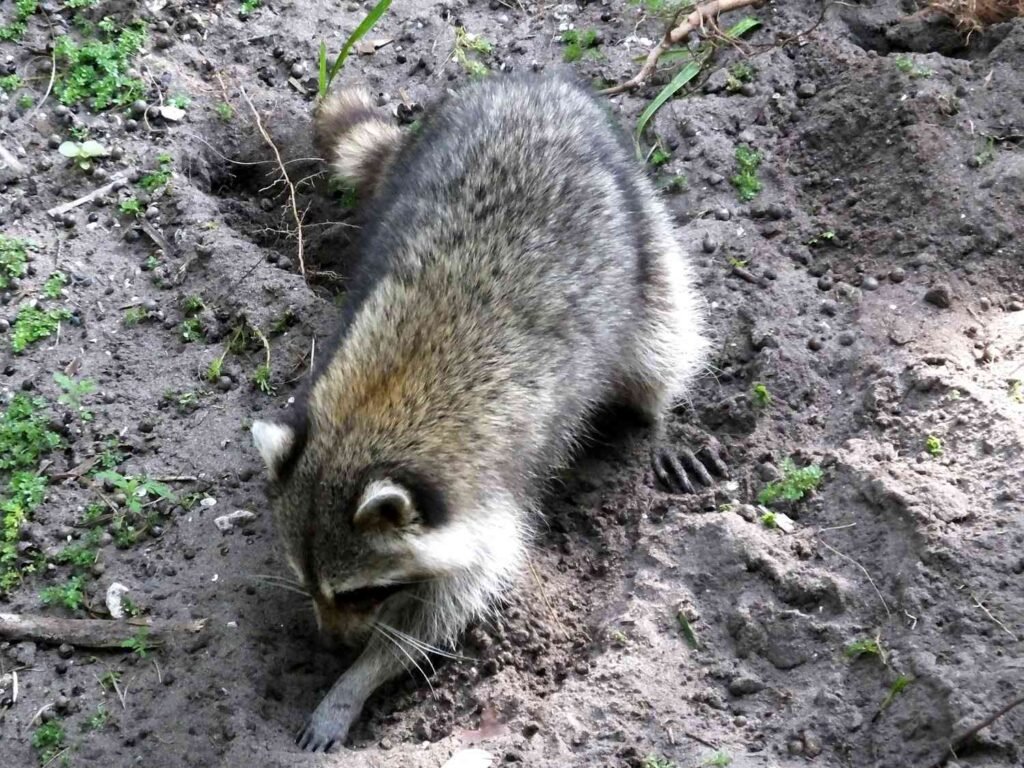
Raccoons are highly adaptable mammals known for their intelligence and dexterity. They are primarily nocturnal, feeding on a diverse diet that includes insects, grubs, fruits, small animals, and human-provided food like pet feed or garbage.
Key Factors Driving Lawn Digging
- Food Sources: Raccoons often dig for grubs, beetles, and earthworms in moist, healthy lawns.
- Shelter: Lawns near gardens, woodpiles, or dense shrubs provide cover and safety for raccoons.
- Habituation: Raccoons quickly learn to associate lawns with easily accessible food, reinforcing digging behavior.
Understanding these triggers is essential to implementing effective prevention strategies.
1. Reduce Attractants
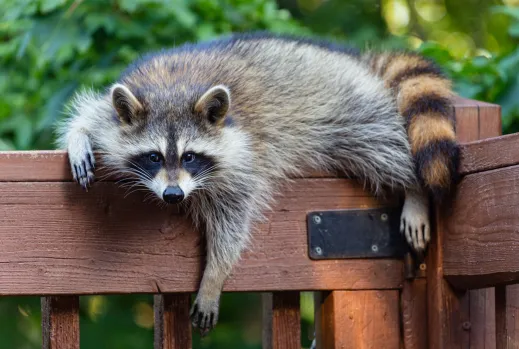
The first step in raccoon control is to eliminate factors that attract them to your lawn.
Common Attractants
- Grub Infestations: Healthy lawns rich in grubs are prime raccoon targets.
- Pet Food: Outdoor pet food or water bowls left overnight can attract raccoons.
- Garbage and Compost: Unsecured bins or compost piles provide easy meals.
Prevention Tips
- Treat grub infestations naturally with nematodes or milky spore to make lawns less appealing.
- Feed pets indoors and remove food and water bowls at night.
- Secure garbage cans with raccoon-proof lids and compost bins with tight covers.
By removing food incentives, you can significantly reduce raccoon visits.
2. Physical Barriers
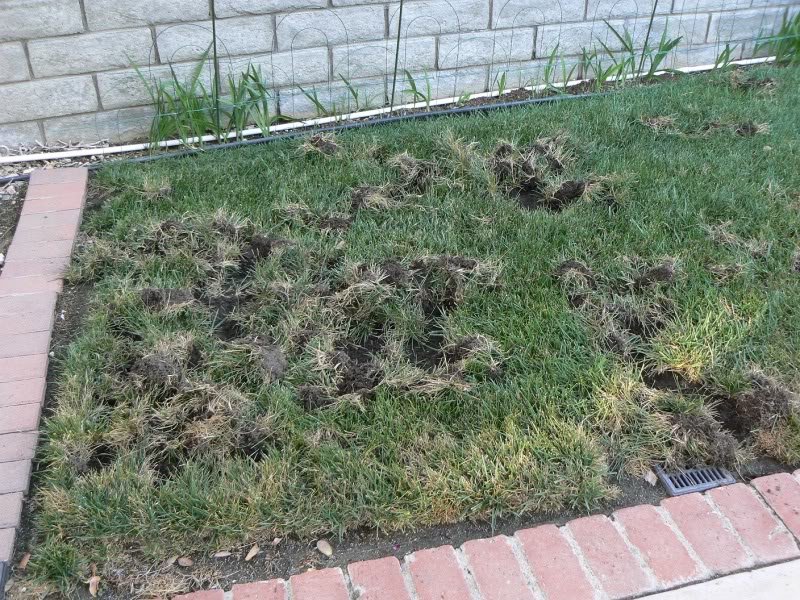
Creating physical obstacles can prevent raccoons from accessing your lawn or garden areas.
Methods
- Fencing: Install sturdy fences 4–5 feet high with 1-inch mesh and bury the bottom 6–12 inches underground to prevent digging underneath.
- Row Covers or Netting: Protect vegetable gardens or flower beds using netting or floating row covers.
- Garden Bed Edging: Use raised beds or hard-edged borders to make digging more difficult.
Tips for Effectiveness
- Ensure fences are tall enough to prevent climbing; raccoons are excellent climbers.
- Bury fencing underground to deter tunneling underneath.
- Combine barriers with repellents for maximum effectiveness.
Physical barriers provide a long-term, non-lethal solution to raccoon lawn damage.
3. Natural Repellents
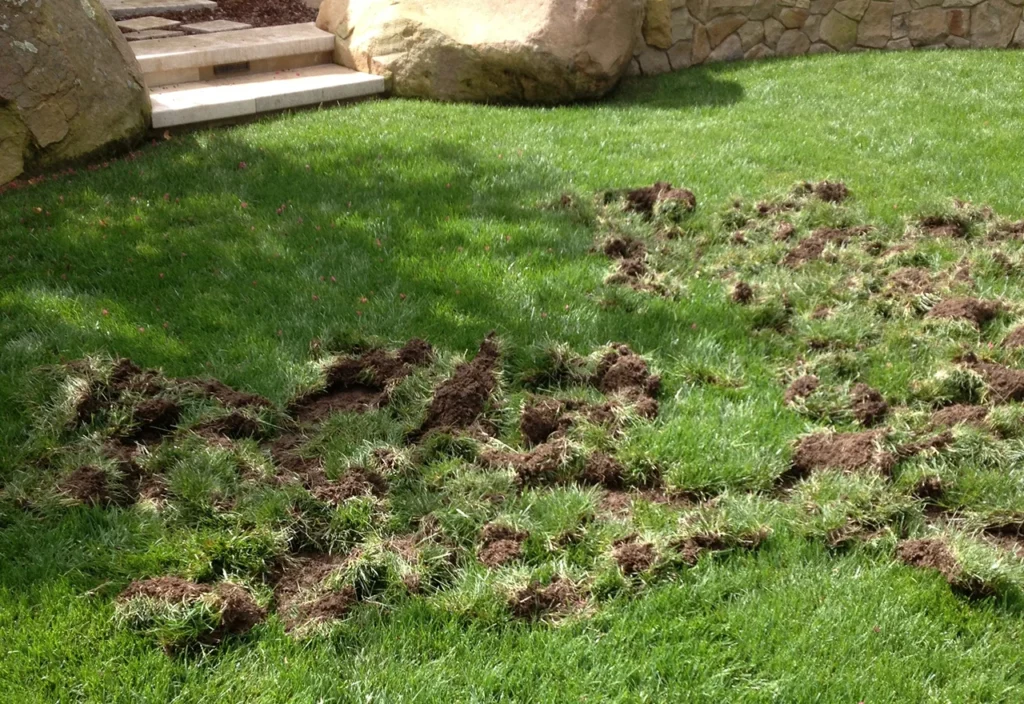
Raccoons are highly sensitive to smell and taste. Certain natural deterrents can discourage them from digging in lawns.
Popular Natural Repellents
- Blood Meal: Its strong scent signals danger to raccoons and encourages avoidance.
- Cayenne Pepper or Chili Powder: Sprinkle lightly on areas prone to digging.
- Garlic or Ammonia Solutions: Strong odors deter raccoons when applied around lawn perimeters.
Application Tips
- Reapply after rain or watering to maintain effectiveness.
- Avoid excessive use that could harm pets or beneficial insects.
- Focus on entry points, high-activity areas, and newly dug spots.
Repellents are a safe and chemical-free way to train raccoons to avoid your lawn.
4. Motion-Activated Deterrents
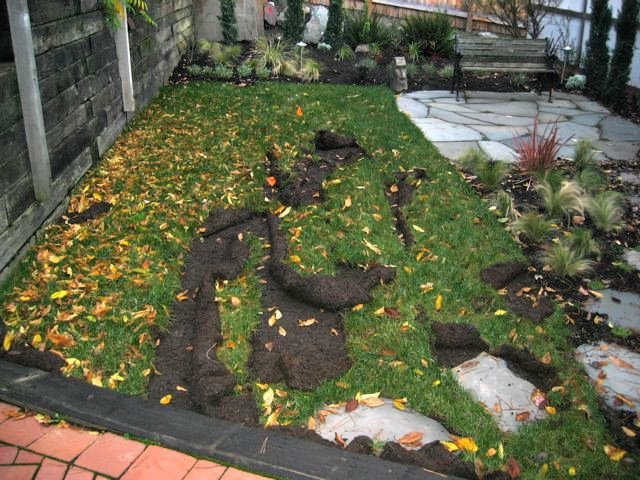
Raccoons are cautious animals and respond strongly to sudden stimuli. Motion-activated devices can discourage them effectively.
Devices
- Sprinklers: Motion-activated sprinklers startle raccoons with sudden bursts of water.
- Lights or Alarms: Motion-sensor lights or sound devices create unexpected disturbances.
- Ultrasonic Devices: Emit high-frequency sounds that are irritating to raccoons but mostly inaudible to humans.
Tips for Maximum Impact
- Place devices near the perimeter of your lawn or near high-damage areas.
- Rotate or move devices periodically to prevent raccoons from becoming accustomed.
- Combine with other deterrents for a multi-layered defense strategy.
These non-lethal deterrents are humane, environmentally friendly, and highly effective for reducing nighttime visits.
5. Encourage Natural Predators
Supporting natural predators of raccoons can add an extra layer of protection. While raccoons have few predators in urban areas, encouraging hawks, owls, or dogs in the vicinity can discourage their activity.
Strategies
- Install Owl Boxes: Attracting owls increases predation pressure on small animals that raccoons feed on, reducing their incentive to forage in your yard.
- Dogs: Supervised outdoor pets can discourage raccoon activity, especially at night.
- Birds of Prey: Encourage perch sites to attract hawks or falcons, which can keep raccoon populations in check naturally.
While not a standalone solution, predators complement other control methods and reinforce a balanced ecosystem.
6. Lawn Maintenance Practices
Proper lawn care can reduce raccoon damage while promoting a healthy yard:
- Reduce Soil Moisture: Raccoons are attracted to moist soil for grubs; proper irrigation and soil aeration can make the lawn less appealing.
- Regular Mowing: Shorter grass allows you to spot signs of raccoon activity quickly and makes digging more difficult.
- Grub Control: Use natural treatments to keep grub populations low, discouraging raccoon foraging.
- Remove Shelter: Clear fallen branches, dense shrubs, or brush piles where raccoons may hide.
Healthy, well-maintained lawns are less attractive to raccoons and easier to protect.
Combining Strategies for Best Results
No single method guarantees raccoon-free lawns. A combination of strategies works best:
- Eliminate attractants such as grubs, food, and trash.
- Install physical barriers and protective fencing.
- Apply natural repellents to high-risk areas.
- Use motion-activated deterrents for active protection.
- Encourage natural predators and maintain lawn health.
Integrated approaches reduce the likelihood of raccoons returning and create a balanced, wildlife-friendly yard.
Conclusion
Raccoons may be intelligent and adaptable, but their digging behavior can be managed safely and effectively with a combination of preventive measures. By understanding raccoon habits, reducing attractants, installing barriers, applying repellents, and incorporating motion-activated deterrents, homeowners can protect their lawns while coexisting with wildlife.
A proactive, multi-layered approach ensures a healthy, aesthetically pleasing yard, minimizes damage, and reduces reliance on harmful chemicals or traps. Respecting raccoons as part of the ecosystem while implementing these humane strategies allows gardeners to maintain control over their lawns and enjoy a productive, pest-free outdoor space.
Ultimately, knowledge, vigilance, and environmentally friendly interventions are the keys to stopping raccoons from digging in your lawn—transforming a potential nuisance into an opportunity to practice sustainable, wildlife-conscious gardening.
